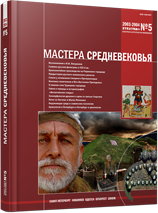Сообщения византийских источников о регионе Нижнего Дуная в V – X веках
Byzantine Records about the Lower Danube Area in V-X centuries
Author(s): Costel ChiriacSubject(s): History, Ancient World, Middle Ages, 6th to 12th Centuries
Published by: Издательский дом Stratum, Университет «Высшая антропологическая школа»
Summary/Abstract: The author examines, mainly, the communications of the late Romanian and Byzantine literary sources concerning the ethnic realities in the Lower Danube area in the second half of the first millennium. The interest of the Byzantine authors in this geographical area is illustrated by frequent notes about different migratory populations and tribes (Gepidae, Huns, Slavs, Avars, Bulgars, etc.). This interest depended on the military and political relations of Byzantium with these ethnic groups. However, the Byzantine authors notice the existence of an ethno-linguistic background, composed of the Thraco-Daco-Roman population living on both banks of the Danube river. Sometimes this local background is represented occasionally by Roman (Byzantine) war-captives, refugees from Byzantium over the Danube, who were, often, ransomed by state or by their relatives (see: Priscus Panites, Procopius Caesariensis, Menander Protector, Theophylactus Simocatta, Pseudo-Mauricius a.o.). In De aedificiis Procopius notices many Latin and Thraco-Dacian toponyms in the 6th century. The existence of this native human and linguistic fund represents the most recent stage of the complex process which generated the Romanian people and language. In the 10th century the Byzantine sources pointed out the Greek name of Vlahoi (Walachi = Romanians). The map presents the political situation in the Danube region around the year 600 AD.
Journal: Stratum plus. Археология и культурная антропология
- Issue Year: 2004
- Issue No: 5
- Page Range: 370-387
- Page Count: 18
- Language: Russian
- Content File-PDF

